REPARTIMIENTO
When slavery was abolished, the Crown still had to support the need for labor. The unethical system of encomienda was replaced by a system called repartimiento (meaning to divide up) which required all Indigenous men between the ages of 16 and 60 to labor for one week of each month for private individuals, religious institutions, municipalities, and/or government offices. Indeed, this was one form of slavery replacing another. On paper, the system was supposed to provide Indigenous peoples with compensation for their labor and leave them free to work their own fields for the remaining three or so weeks of the month. But, in practice, things were very different; abuses became commonplace and slavery-like conditions arose.
Local people were required to devote considerably more than a week’s labor to the Spaniards, since they had to walk very long distances, sometimes for days on end, from their villages to their places of work. And they were charged for the food and any other goods they consumed – thus using up their miserably small amount of pay. Many were forced to escape the repartimiento system by leaving their communities, although the practice eventually faded away in the 17th century as the number of native people declined and many laborers became directly employed by hacienda owners.
At the same time, an effort was made to redistribute land and to make the haciendas more productive. The profitable new crops of sisal, tobacco, sugar cane, and cotton demanded more land, which was seized from communal Maya holdings. Increasingly, the Maya were employed as laborers on these estates, often in conditions of near-slavery.
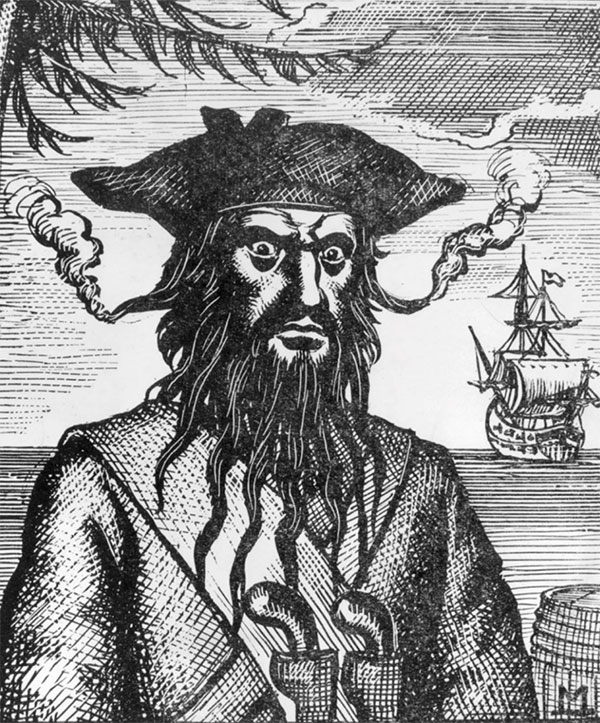
Captain Edward Teach, or Blackbeard.
No pirates are as enduringly remembered as Blackbeard – Bristol-born Edward Teach, who allegedly spent much time hiding out in the Belizean cayes off the Gulf of Honduras.
When the struggle for independence began in Spanish America during the first decades of the 19th century, the Maya were still regarded as the lowest sector of society. Their customs and beliefs were largely ignored, if not despised. By this time they had very little idea of their ancestors’ glorious achievements, and yet many elements of their distinctive culture – language, dress, social habits, and structures – had managed to survive against the odds.
British colonization
While Spain had claimed Belize, the Bay Islands, and the Mosquito Coast, the Spanish had not been able to settle there, partially because they were unable to fight off the native inhabitants, while the challenging terrain – coral reefs, murky swamps, and mosquito-filled forests – proved a deterrent. However, English and Scottish adventurers began arriving in search of logwood trade – with no interest in taxing or converting the locals, they got on much better with them. Gradually, the sparsely-inhabited coastline of Belize began to attract another kind of British entrepreneur: the buccaneer, or pirate. Plundering Spanish cargo ships and selling on the loot elsewhere in the Caribbean, the buccaneers used the Belizean reef, with its mud flats and treacherous coral heads, to their advantage by utilizing fast, shallow draft ships. By 1670, the death-knell for Caribbean freebooting was sounded when a treaty between Britain and Spain pledged to suppress piracy on the high seas.
Many British settlers, known as the Baymen, had been forming settlements and logging since the 1630s, and despite regular attacks by the Spanish until the end of the 18th century, when the Battle of St George’s Caye was won decisively by the Baymen, they prevailed in establishing a colony around the logwood and later, the mahogany trade. They brought in boatloads of African slaves from Jamaica to help cut down the trees, who soon outnumbered the white settlers roughly ten to one. Slave laws were more liberal than in, for instance, the southern United States, and it was possible for slaves to make ‘overtime’ pay by working on Saturdays, and even to buy their freedom, while female slaves taken as mistresses by settlers were also freed. Conditions for slaves, however, could be as brutal in Belize as anywhere else.
Even after the emancipation of Central America from the Spanish, the British continued to administer the region and formally declared Belize a British Crown Colony in 1862, calling it British Honduras.
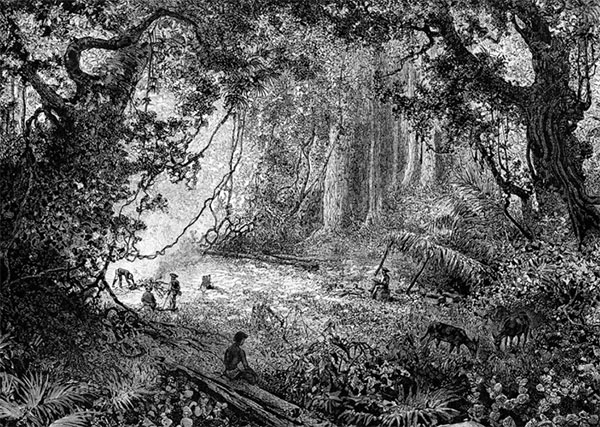
Baymen working in the rainforest of British Honduras.
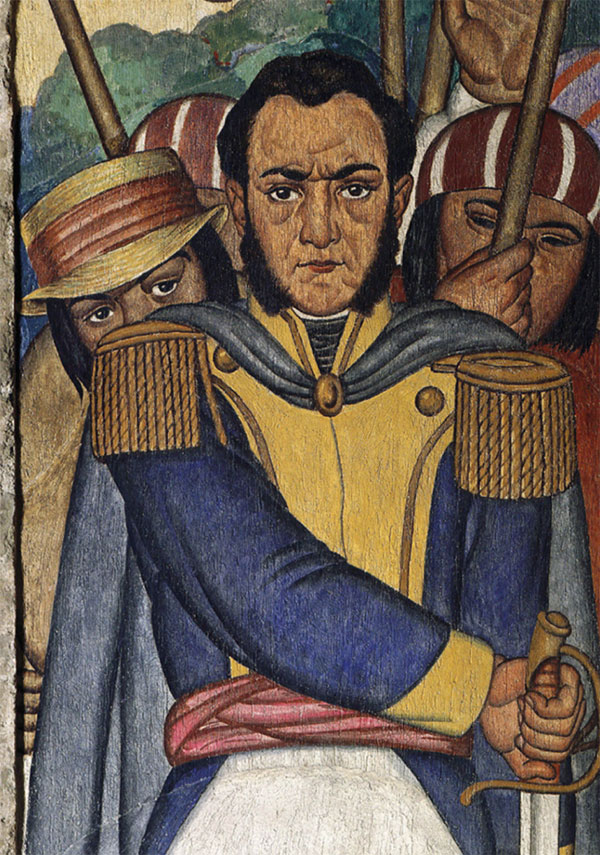
Francisco Morazán.
Dagli Orti/REX/Shutterstock
INDEPENDENCE
A power vacuum brought on by the end of Spanish rule left the region in disarray and vulnerable to outside forces.
Under the supervision of the Spanish viceroy in Mexico City, much of Central America was loosely united as the Captaincy General of Guatemala until the early 19th century. This included part of the state of Chiapas, Guatemala, El Salvador, Honduras, Nicaragua, and Costa Rica. As Napoleonic forces and Spain, Portugal, and Britain battled for control of the Iberian Peninsula in the Peninsular War between 1807 and 1814, the Central American union began to fray.
Independence movements first broke out in El Salvador in 1811, and again in 1814, but the rebellions didn’t amount to much. However, in Guatemala City on September 15, 1821, a group of Central American Criollos declared the region’s independence from Spain. It didn’t last long. A year later, despite the objections of liberal factions, conservative leaders allowed the annexation of Central America by Mexico, which had been the center of the Spanish viceroyalty and was now ruled by an emperor, Agustín de Iturbide. The following year Mexico became a republic and on July 1, 1823, the congress of Central America broke away and declared its independence.
Modeled after the United States of America, this new nation became known as, according to the Constitution of 1824, ‘The Federal Republic of Central America.’ It consisted of the states of Guatemala, El Salvador, Honduras, Nicaragua, and Costa Rica, as well as – for a short time – Los Altos, which included parts of Mexico and Western Guatemala. The Guatemalan Manuel José Arce became the federation’s first president. Liberals hoped that Central America would develop into a democratic nation that could build on trade from goods crossing from the Atlantic to the Pacific and vice versa, though it only lasted six years before rebel troops, calling themselves ‘the allied army for the protection of the law’ under General Francisco Morazán from Honduras, took Guatemala City in 1829. The final nail in the coffin was when Nicaragua separated from the federation in 1838 and the union soon dissolved.
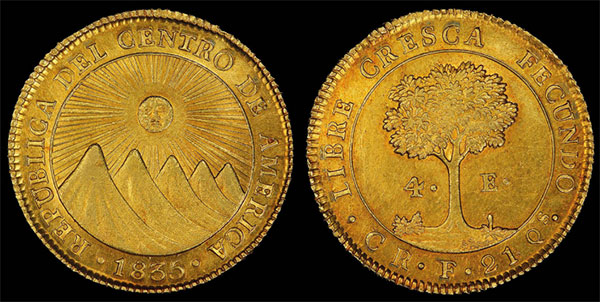
Coin of the Federal Republic of Central America.
National Museum of American History
Coffee power
The provinces became their own republican states, though tensions grew more aggressive throughout the rest of the 19th century. There were many attempts at uniting Central America as a single nation, though results never panned out.
In 1843 William Le Lacheur, an Englishman on his way back home with a cargo of pelts, put into Puntarenas, a Costa Rican port on the Pacific coast, in search of ballast for his ship, which had been battered by storms off the Mexican coast. He loaded some 230,000kg (500,000lbs) of coffee into his hold and the Costa Rica–Liverpool connection was established. Thus were the British Isles and, ultimately, the European continent, opened up as an important new market for Costa Rican coffee.
Members of the budding coffee oligarchy called on General Francisco Morazán, a hero of the Central American Federal Republic, to free them from what they perceived as President Braulio Carrillo’s despotism. Morazán was welcomed as a liberator when he arrived in Costa Rica in April of 1842, with an army of 500 mostly Salvadoran volunteers. The head of Carrillo’s army, Vicente Villaseñor, met up with Morazán just as the general and his men neared Alajuela on their march from the Pacific port of Caldera, and offered to join forces with him. The Pacto de Jocote sealed, Carrillo fell and was forced into exile in El Salvador. A special assembly named Morazán provisional head of the state of Costa Rica.
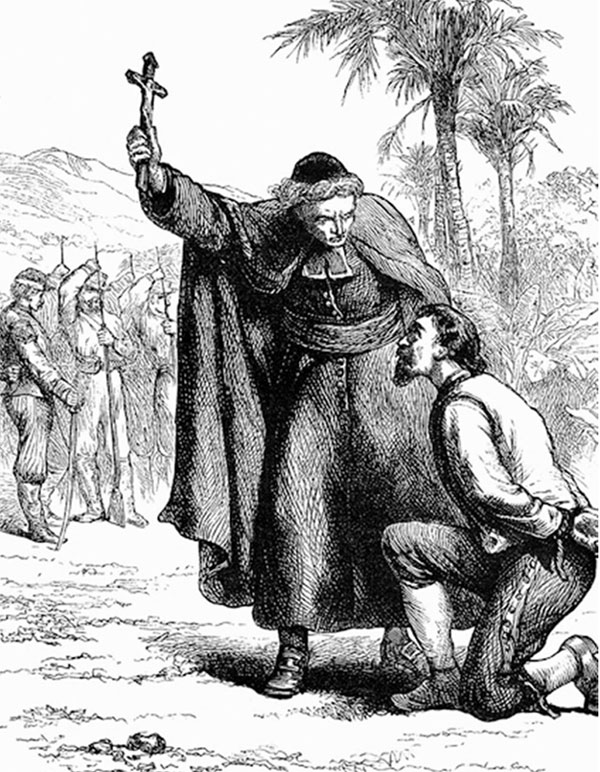
William Walker praying before his execution in 1860.